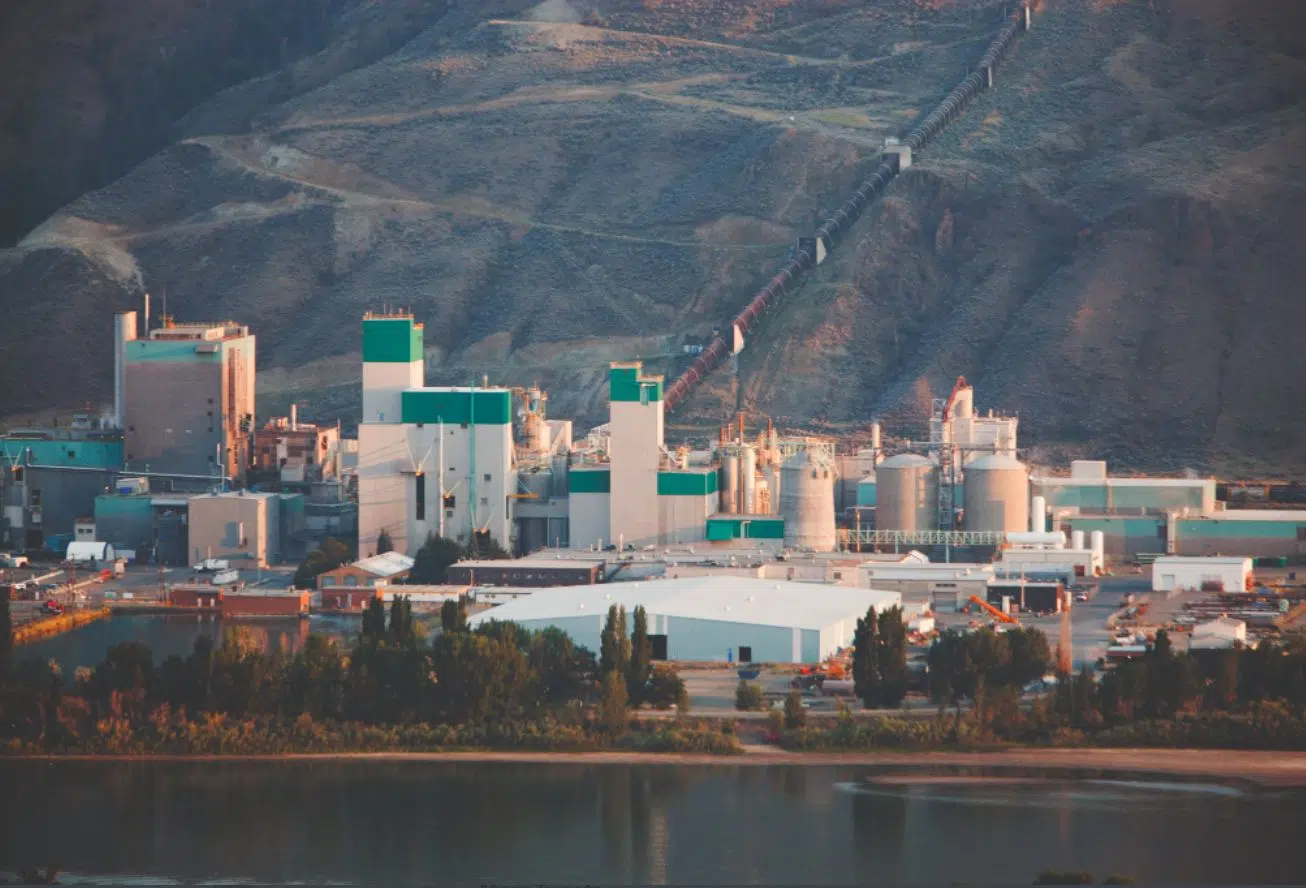
The Kamloops Pulp Mill (Photo via Kruger)
The City of Kamloops will lobby the provincial government on behalf of the Kruger mill on Mission Flats Road in its bid to access more fibre to sustain operations.
The mill’s Fibre manager, Thomas Hoffman, told Kamloops city council Tuesday that the mill does have not have any forest tenure, leaving it at the mercy of the market.
“Right now as we speak, we have about 17 days of chips on our pile,” Hoffman said at Tuesday’s council meeting. “Historically and traditionally, we would expect to see 30 days, so we’re not quite half but just to advice council, our supply is not in jeopardy, but you know, we’re concerned.”
He says the fibre shortage is due in part to recent mill curtailments and closures across the province, noting it is why Kruger is increasing its use of fire-affected wood and slash piles, where possible.
“Some of the things that we’ve been doing is improve utilization from the major operations,” Hoffman said, noting the mill has trucked in fibre from as far away as Lillooet and Revelstoke.
“We’ve talked to Interfor, Tolko, West Fraser, and Weyerhaeuser about accessing the stuff that historically would have piled and burned, and they’ve been for the most part quite cooperative.”

Photo via Kruger
The Kamloops mill – which was sold to Kruger as part of Domtar’s merger with Paper Excellence – produces five grades of specialty pulp which is in turn used in a variety products like fibre cement, tissue towels, and electrical paper. About two-thirds of the pulp produced in Kamloops is shipped to Asian markets.
“Our product is produced from what is historically been considered waste,” Hoffman said. “Waste from sawmills and as well logging debris that has historically been piled and parked.”
“We’re exploring opportunities to utilize that fibre and as you can appreciate to convert a fibre that’s burnt into a pure white product is a bit of a challenge. So we had to do some innovation inside the mill as well.”
He also says the company wants to work with First Nations to access their forest tenures “so that they can be part of the forest economy.”
“From a company perspective, this is the way forward and we are going to do as much as we can to work with our First Nations partners,” Hoffman said.
General Manager, Darrel Booker, told city council that when the mill was built in 1965 as a 250 tonne a day plant, it relied entirely on residual chips from sawmills to keep it operational.
“As we sit here today, we don’t get that. We’re lucky if we get 70 per cent, 65 per cent of our chips are coming from sawmills,” Booker said, noting the mill currently products around 1,150 tonnes of pulp a day.
“We got less all the time when there’s a sawmill that’s shutdown or impacted. So like Tom said, we have to go and get non-traditional.”
The Kamloops pulp mill directly employs 340 people, with about 1,000 indirect jobs tied to its operations. It also pays about $5 million a year in taxes to the City of Kamloops.
The mill also generates about 460,000 megawatt hours power a year, and has a $750 million economic impact in Kamloops, based on a 2014 study by Venture Kamloops.
“However the council sees fit – whether that’s a letter to the minister, to the premier, just interfacing at UBCM – all of those aforementioned opportunities, we would welcome those, and would be more than happy to share ongoing communication with council,” Hoffmann noted.
City councillors unanimously voted in favour of a motion by Councillor Katie Neustaeter to send that letter of support to the province.















